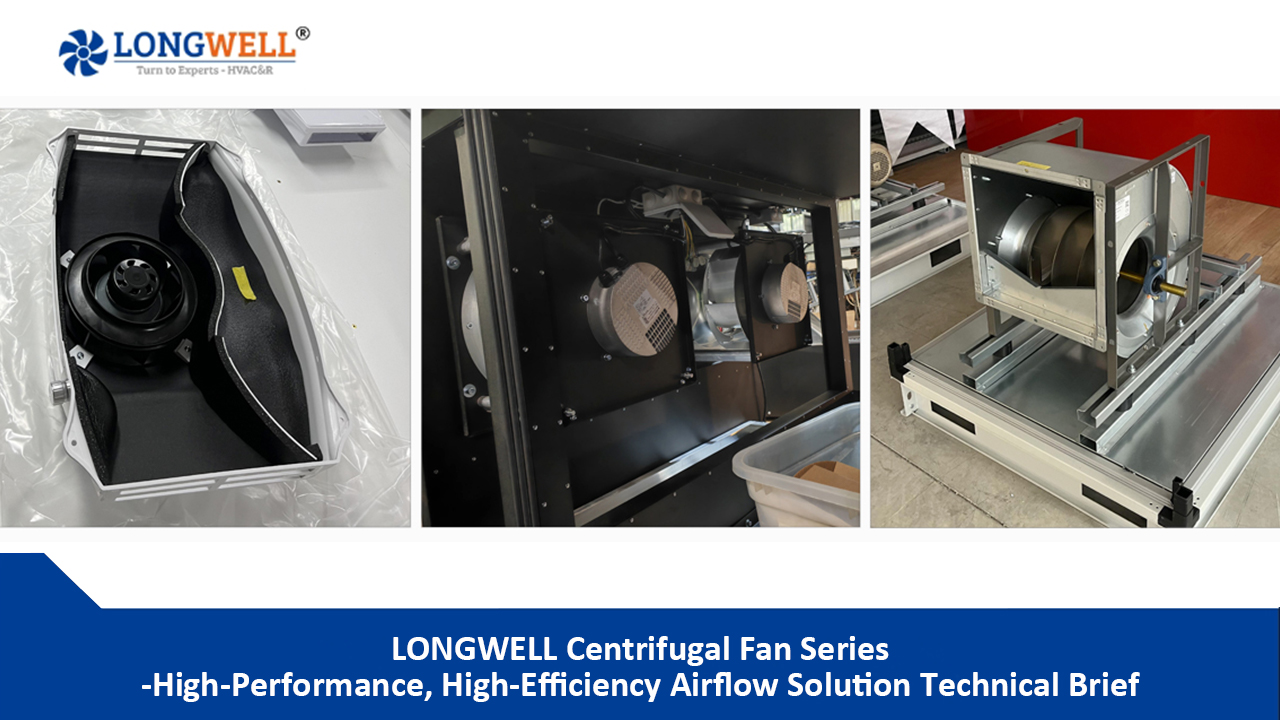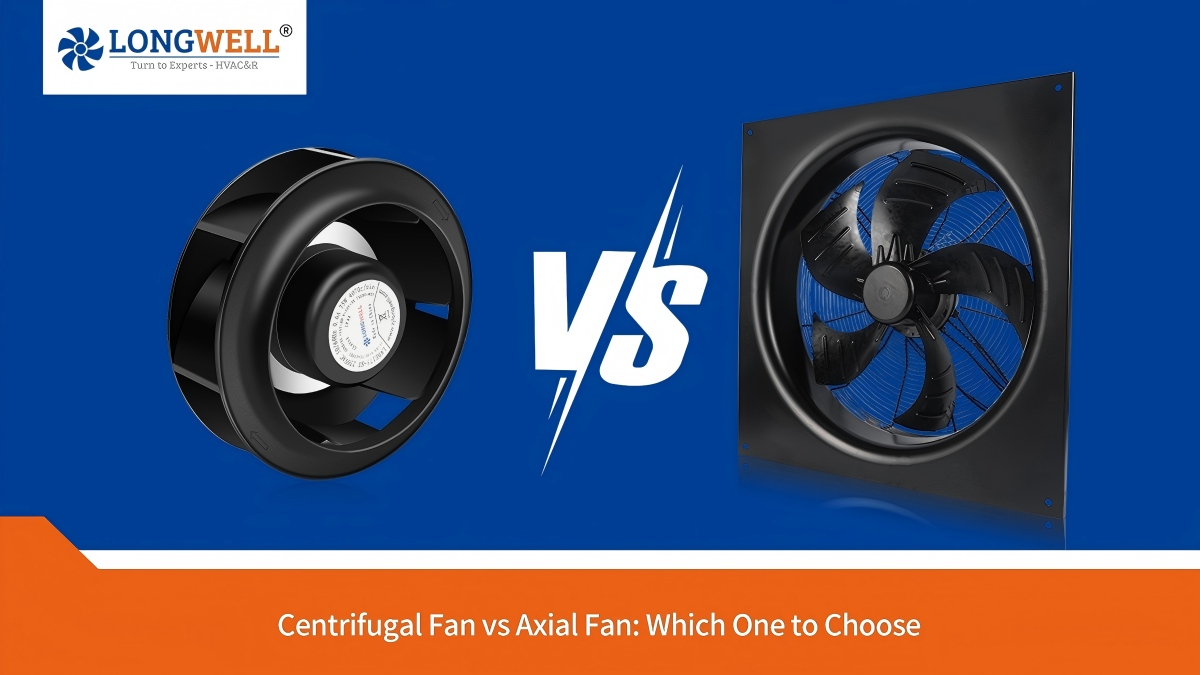
Centrifugal fans can be divided into forward-curved centrifugal fans and backward-curved centrifugal fans, with different constructions determining their respective performances and applications.
Forward-curved centrifugal fan composition and applications:
This series of fans consist of external rotor motors, plastic or metal forward-curved impellers, and plastic or metal volutes, integrated for compact structure, small size, light weight, and convenient installation and use.
Applications: Suitable for forced ventilation of automatic control devices, electronic equipment, indoor duct dust removal, exhaust, heat dissipation, environmental protection, air purification, and pollution control.
Composition and applications of backward-curved centrifugal fans:
The fan is composed of an external rotor asynchronous motor and a combination of plastic/aluminum impellers, with the unique advantage of low motor temperature rise for ventilation and self-cooling, thereby extending the fan’s life and reliability. This fan features backward-curved impellers, with a compact structure, high air volume, high static pressure, low vibration, low noise, and convenient installation.
Applications: Mainly used for purification workbenches, purification units, duct dust removal, purification of air conditioning systems, environmental protection, pollution control, and as supporting equipment for refrigeration devices.
The distinction between forward-curved and backward-curved centrifugal fans mainly refers to the different assembly of fan blades. Forward-curved types are generally referred to as centrifugal blowers, while backward-curved types are generally referred to as centrifugal fans. The difference lies in the length of the impeller crossbar and the impeller edge. Forward-curved impellers are parallel to the impeller edge, with an outlet angle greater than 90 degrees, also known as forward-curved impellers, which are mostly high-pressure. In contrast, backward-curved impellers are not parallel to the impeller, with a difference in length to the impeller edge of a few centimeters or millimeters, indicating an outlet angle less than 90 degrees, also known as backward-curved impellers, primarily operating at medium pressure.
1. Power:
The static pressure head required to overcome system resistance is smaller for forward-curved centrifugal fans than for backward-curved ones. Due to the gradually expanding channel in backward-curved blade fans and the smaller curvature of the blades compared to forward-curved ones, the hydraulic losses are smaller, resulting in higher efficiency for backward-curved centrifugal fans compared to forward-curved ones.
2. Energy consumption:
Since the efficiency of forward-curved centrifugal fans is lower than that of backward-curved ones, their electrical energy consumption is greater than that of backward-curved centrifugal fans.
3. Noise:
The airflow of forward-curved blades results in greater energy conversion losses, with airflow colliding with the casing at high speeds, leading to higher operational noise for forward-curved centrifugal fans compared to backward-curved ones.
Successful applications:
Forward-curved centrifugal fans play a role in heat dissipation in chassis and cabinets. High air volume enhances the fan’s heat dissipation effect on the cabinet, extending the fan’s lifespan with extremely low noise levels and high power density, suitable for moving large volumes of air in confined spaces. Depending on aerodynamics and geometric requirements, impellers are configured with single or double intakes. The fan ensures cabinet heat dissipation, promoting stable equipment operation.
Backward-curved centrifugal fans find applications in air purification, AHU/FFU applications. Their low power consumption makes them more energy-efficient, with a compact structure occupying less space. High air volume improves equipment efficiency and purification capacity. The fan can operate normally in environments ranging from -25°C to 65°C, significantly extending the purifier’s lifespan. Through aerodynamic design, fan blades ensure quieter operation of the purifier, whether for household purification devices or in highly stringent medical and clean engineering environments, backward-curved centrifugal fans play their greatest role.
Whether forward-curved or backward-curved centrifugal fans, each has its own advantages, disadvantages, and corresponding applications. You are welcome to consult and purchase.



